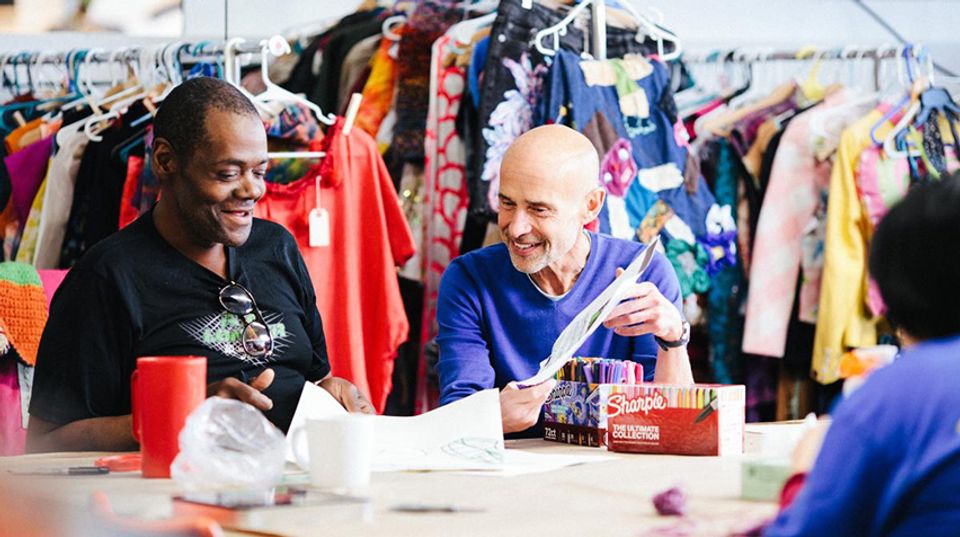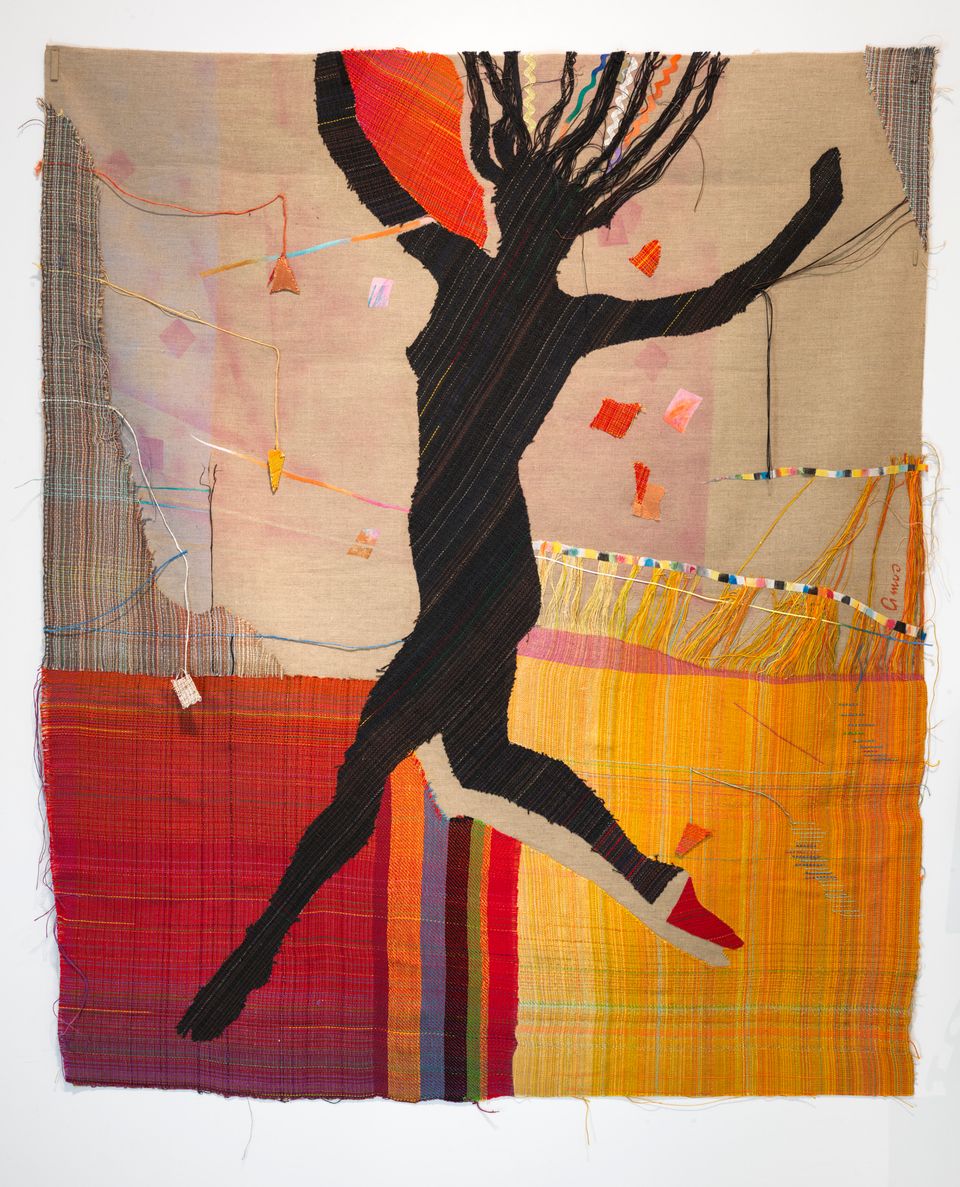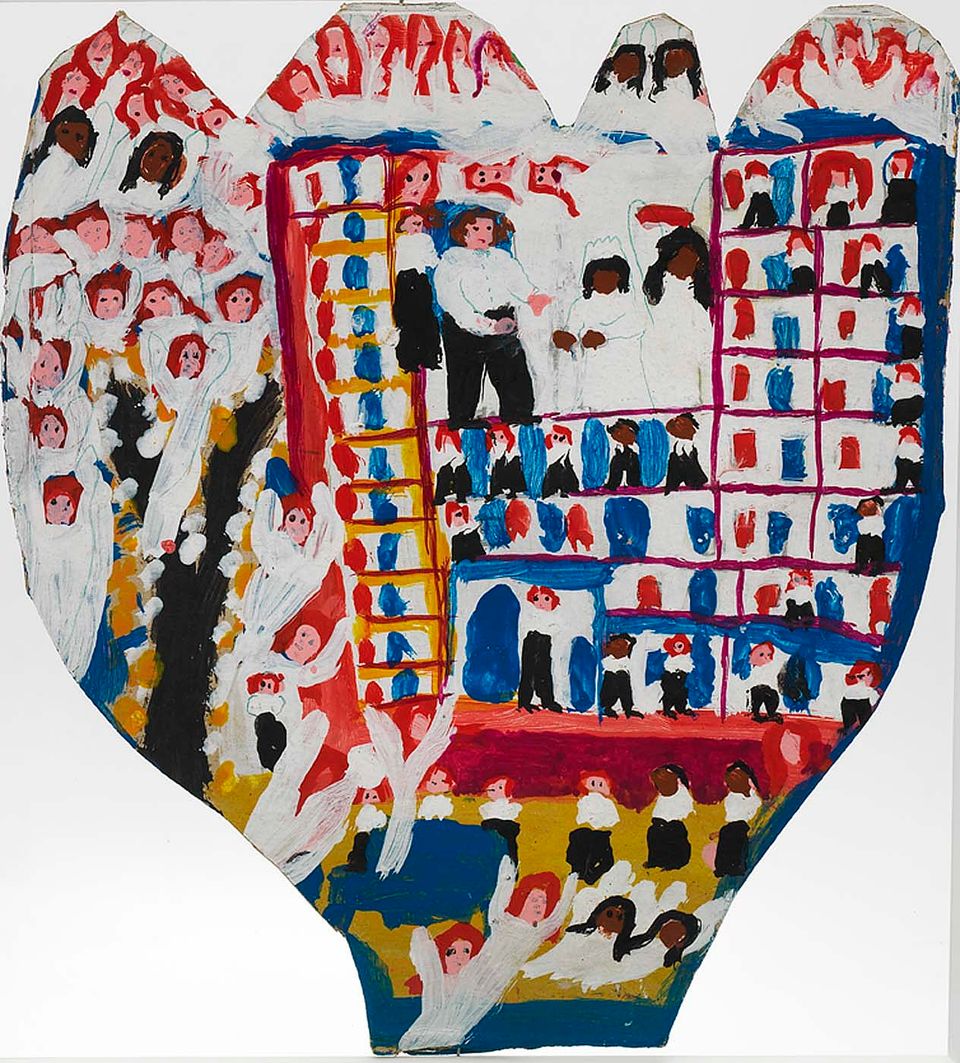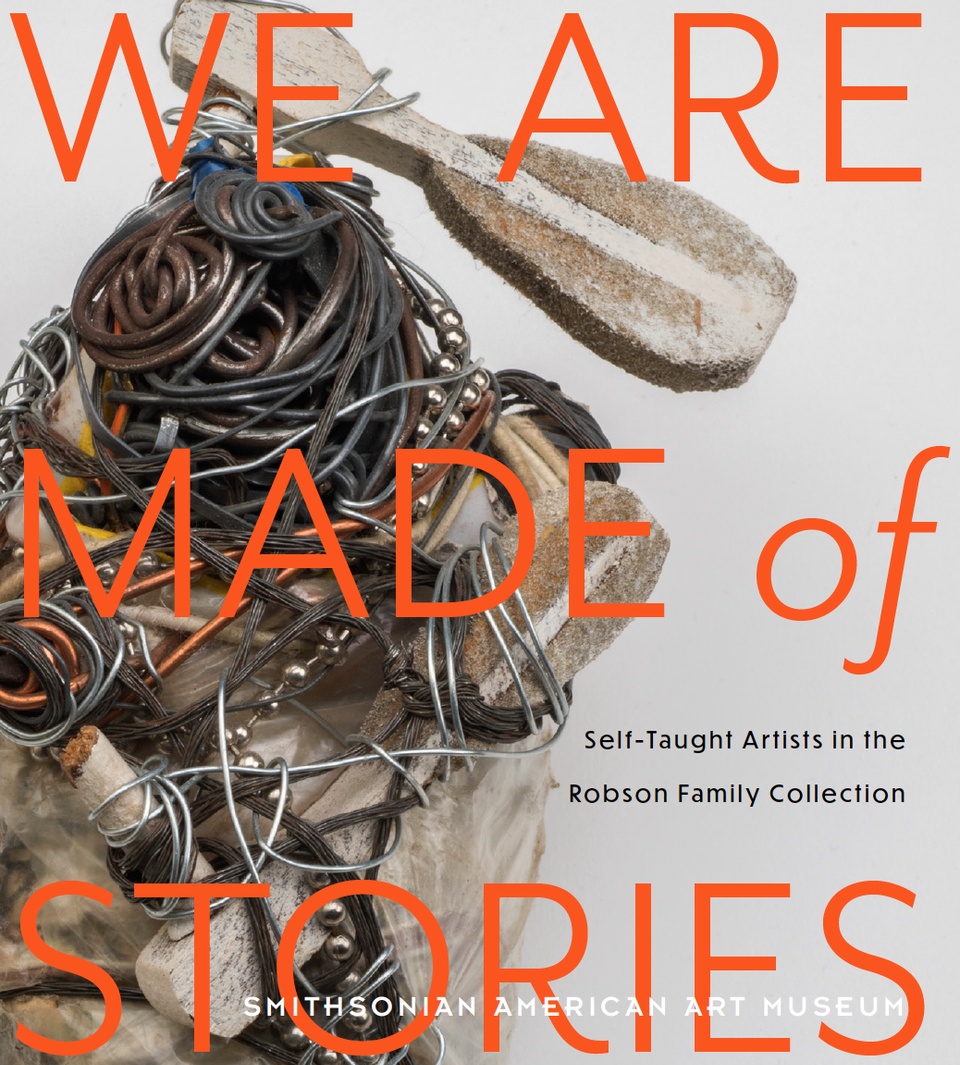Judith Scott

Photograph of Judith Scott, Oakland, CA, 1999. Photo by Leon A. Borensztein. © Leon A. Borensztein. All Rights Reserved
- Born
- Cincinnati, Ohio, United States
- Died
- Dutch Flat, California, United States
- Biography
“It was through the creation of her sculptures that she was empowered to discover a language through which she could express the unspoken and find a voice to communicate with the outside world. Creative Growth gave her this opportunity and the universal language of art gave her this voice.”
–– Joyce Wallace Scott, Judith Scott’s twin sister, 2016
Judith Scott is known for her intuitively assembled mixed-media sculptures that envelop found objects with dense layers of fiber threads and fabric scraps. Since the late 1980s, her complex abstractions have evidenced her powerful drive toward self-expression and connection with others.
Scott and her fraternal twin sister, Joyce, were raised in rural Ohio in the late 1940s. Judith Scott was diagnosed with Down syndrome shortly after birth. At the time, this chromosomal abnormality was not medically understood and people with disabilities were routinely stigmatized and treated inhumanely. Scott was separated from her family and institutionalized at age seven, lacking sufficient medical, physical, and emotional care for the next thirty-six years. Scott’s deafness, likely caused by a childhood illness, was long undiagnosed, further hindering language development and exacerbating her mental isolation. The growing disability rights movement of the 1960s and 1970s, anchored largely in California, resulted in public and legislative victories that paved the way for Scott’s sister to become her legal guardian and coordinate her move to Berkeley in 1985.
In April 1987, at age forty-five, Scott began attending Oakland’s Creative Growth Art Center, a nonprofit studio and gallery program designed for artists with developmental disabilities. This new and unprecedented environment fostered Scott’s turn to creativity as a self-driven mode of expression. Scott initially completed a few rhythmic drawings and paintings at Creative Growth and ultimately found her medium through a fiber class led by artist Sylvia Seventy in late 1987. As Tom di Maria, director emeritus of Creative Growth who worked with Scott for nearly six years reflected, Scott “took that time to develop her own language system and found a way to use art as her form of communicating with the world.”
In 1988, Scott created her first sculpture, a bundle of wooden sticks wrapped in fabric and bound by strands of yarn, and arrived at her signature process by the mid-1990s through daily studio sessions. “She started wrapping,” Scott’s twin sister recounted, “Yarn disappeared. Magazines disappeared. Even chairs and bike wheels disappeared. All of it would emerge later in colorfully woven sculptures.” Scott’s tightly encased cocoons, such as Untitled (ca. 1990–2005, SAAM), conceal an array of personally meaningful and scavenged materials that constituted a language entirely of her own making, one connecting the complexities of her inner world to those surrounding her. Later, Scott’s pieces increased to human scale, as in Untitled (1994, SAAM) with her collected objects becoming the heart and bones of her organic forms. These sculptures demonstrate an interest in the interior and exterior relationships that characterize human interaction, evoking her own personal and artistic journeys.
In the face of decades of trauma and psychic alienation, Scott established a vital artistic practice that conveyed her emotions and selfhood, forged relationships with others, and forever changed the way the art world regards artists with disabilities. With some two hundred works created in her lifetime, Scott’s webbed abstractions constitute tools for connection and survival.
Authored by Gabriella Shypula, American Women’s History Initiative Writer and Editor, 2024.
- Artist Biography
Against the odds, Judith Scott became an artist of great renown, making fiber and mixed-media sculptures that encase forever-softened objects. Scott and her twin sister were born in Ohio. She experienced debilitating physical and mental challenges from birth, but it was arguably the severe stigma and inhumane handling of the mentally disabled in midcentury America that had the most profound impact on Scott’s early life. She spent almost four decades institutionalized, before medical advances and more enlightened models of family integration made such places and treatments outmoded.
Judith joined family in California in 1985, when Scott’s sister became her legal guardian. She began attending Oakland’s Creative Growth Art Center, a nonprofit studio designed to help adults with developmental disabilities flourish through artistic practice. Scott found her medium of fiber in 1988. Her sculptures drew international attention for their visual power and sense of mystery, but her personal story was almost equally compelling. Although her works are not autobiographical in a traditional sense, they embody an alternate language sought and found, an extralinguistic way of conveying emotion and outwardly describing who she was. Scott paved a path for neurodivergent artists being appreciated on their own terms; her complex practice prompted art institutions to reevaluate art as a tool for survival and connection, and today her work resides in museum collections worldwide.
(We Are Made of Stories: Self-Taught Artists in the Robson Family Collection, 2022)
Exhibitions
Related Books
Related Posts





















